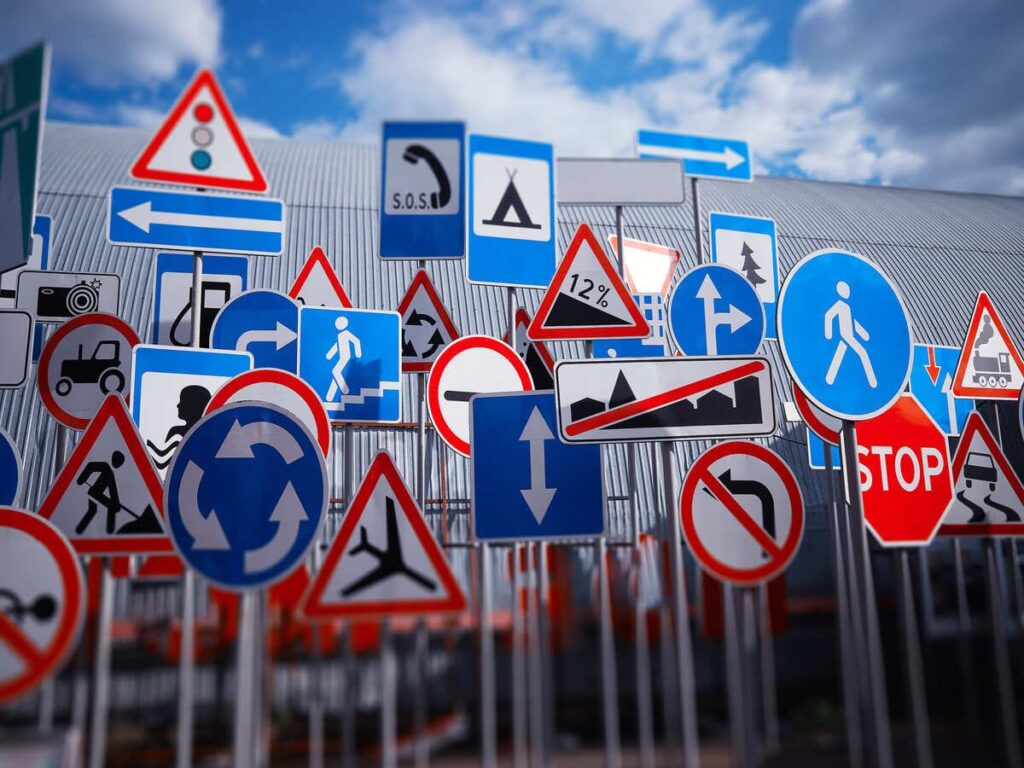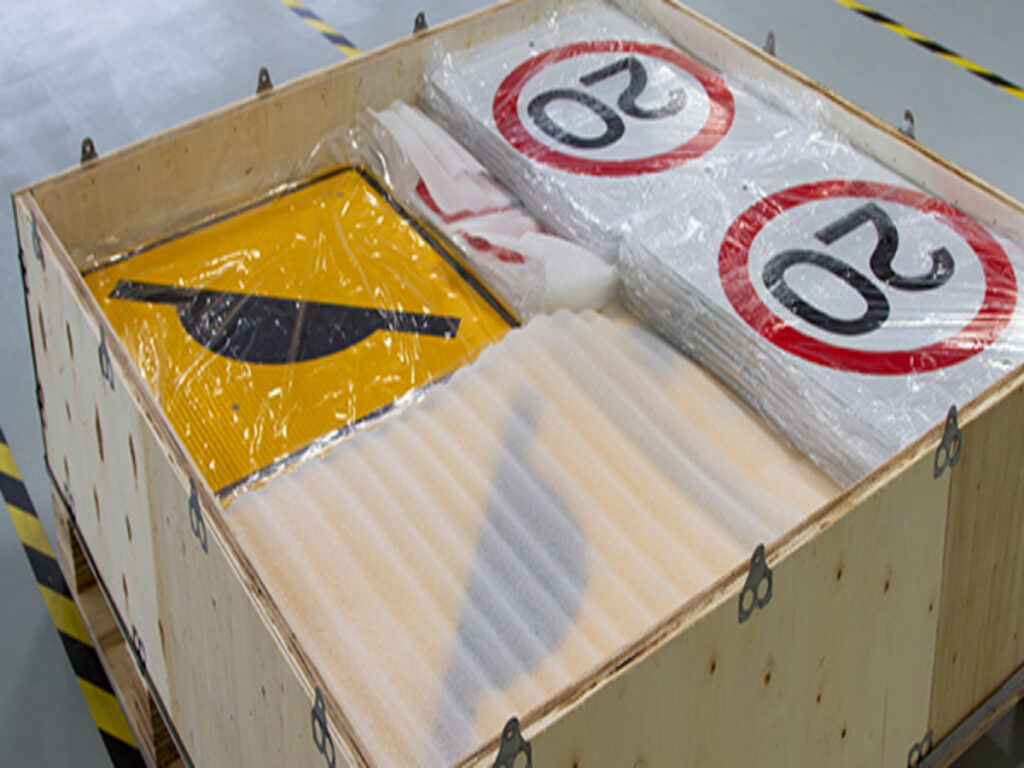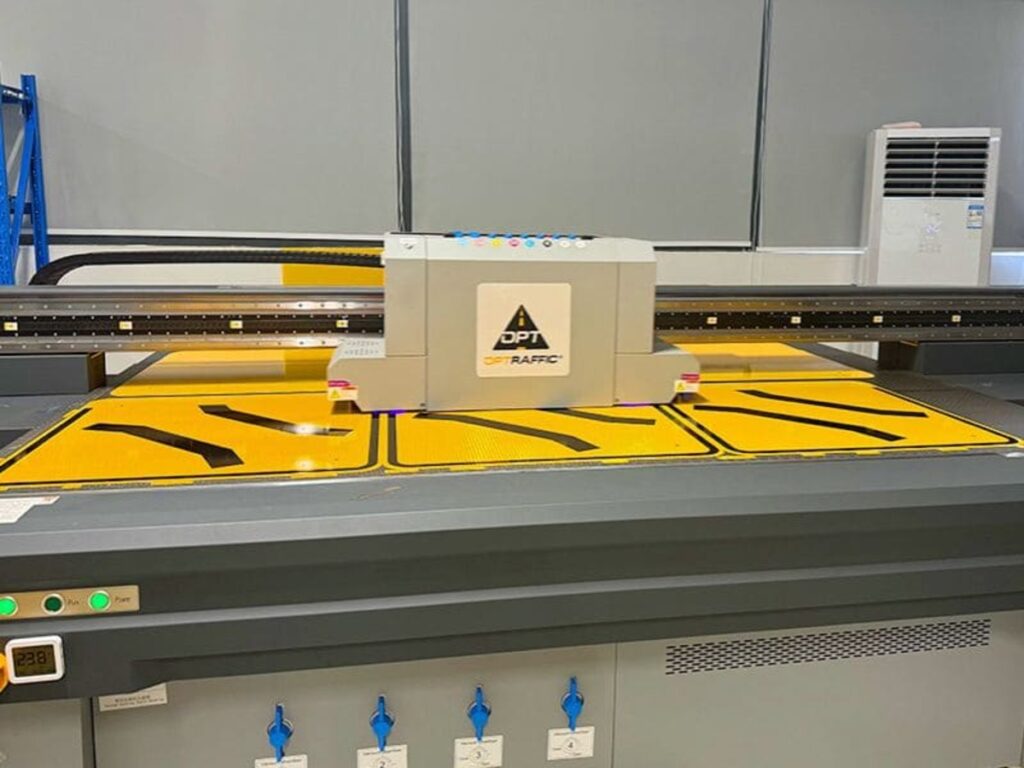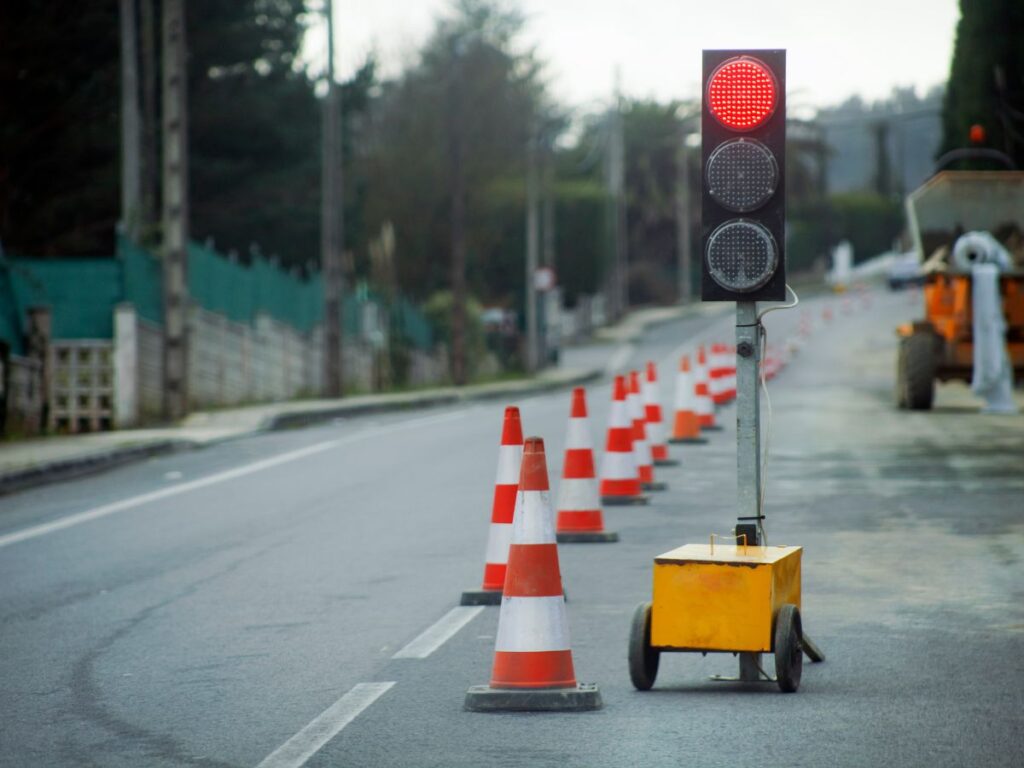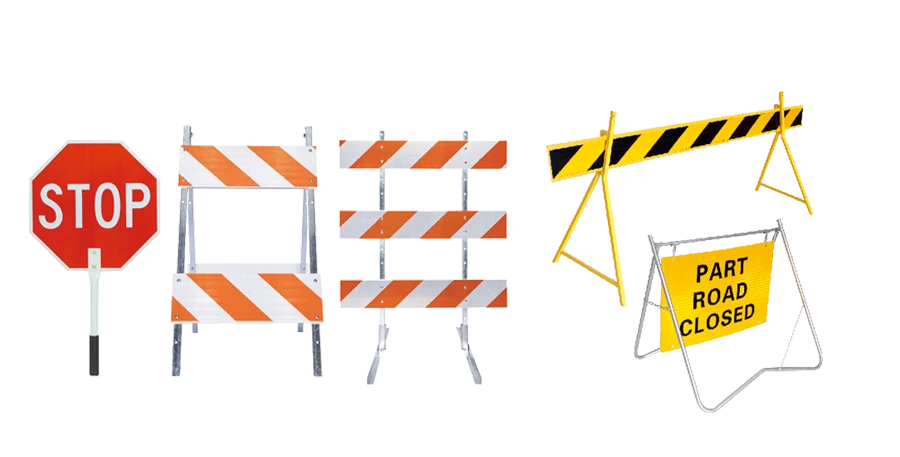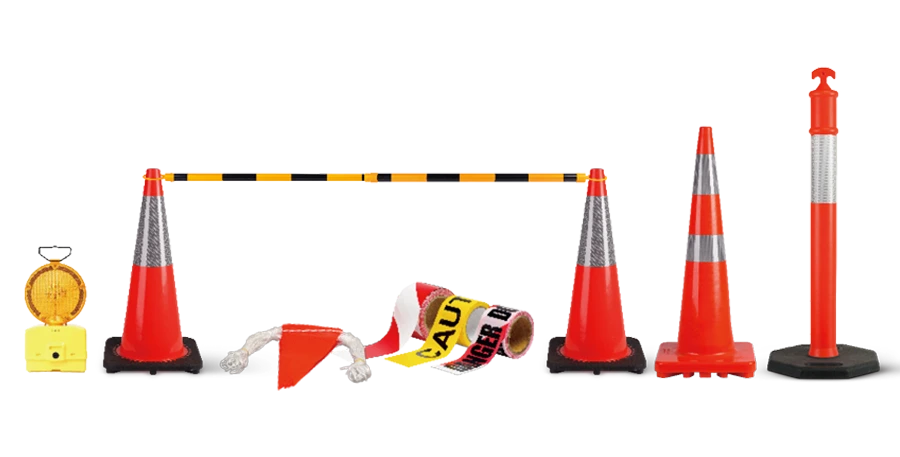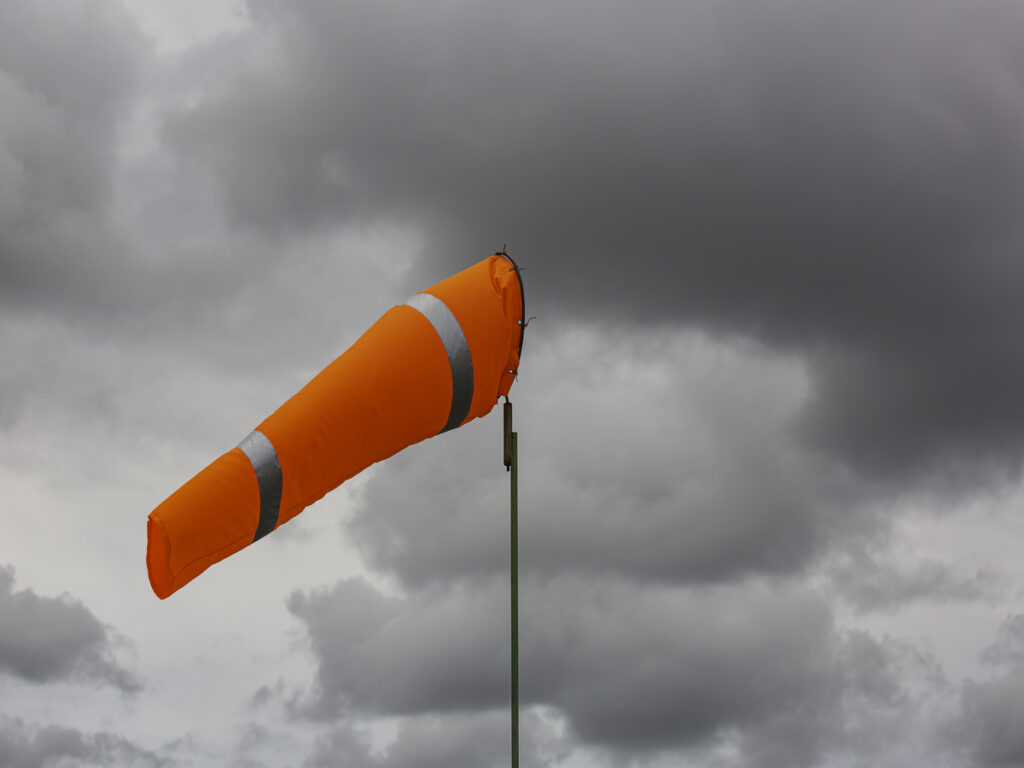
La certificazione FEMA garantisce che i prodotti soddisfino severi standard di sicurezza e durata. Per le aree a rischio di uragani, Questa certificazione svolge un ruolo vitale nel verificare l'affidabilità dei posti delineator del traffico. Questi post guidano i conducenti e mantengono l'ordine sulle strade durante il tempo estremo. Senza test adeguati, Potrebbero fallire in condizioni di uragano, portando a situazioni pericolose. Il processo di test valuta la loro capacità di resistere a forti venti e impatti, Garantire che si esibiscano in modo efficace quando necessario di più.
Takeaway chiave
- La certificazione FEMA assicura che i pali del traffico siano sicuri e forti.
- Test Verificare se i post possono gestire venti e impatti forti.
- I post certificati rendono le strade più sicure e costano meno da correggere.
- Lavorare con esperti e avere buoni documenti aiuta a ottenere la certificazione.
- Conoscere nuove regole FEMA aiuta i produttori a rimanere approvati e competere.
Certificazione FEMA per i posti del traffico delineatore

Cos'è la certificazione FEMA?
Certificazione FEMA è un riconoscimento formale da parte del Agenzia federale di gestione delle emergenze. Conferma che un prodotto soddisfa rigorosi standard di sicurezza e prestazioni. Per i post delineato del traffico, Questa certificazione garantisce che possano sopportare condizioni meteorologiche estreme, ad esempio uragani. La FEMA valuta questi post in base alla loro capacità di resistere al venti forti, impatti, e altri stress ambientali. Raggiungendo la certificazione, I produttori dimostrano che i loro prodotti sono affidabili e in grado di mantenere la sicurezza stradale durante le catastrofi.
Perché la certificazione è essenziale per i posti del delineatore del traffico?
Fai affidamento sui posti delineato del traffico per guidare i veicoli e mantenere l'ordine sulle strade. Nelle aree soggette a uragani, Questi post affrontano sfide intense. Senza adeguata certificazione, Potrebbero fallire in condizioni estreme, conducendo a incidenti o chiusure stradali. La certificazione FEMA garantisce che questi post possano resistere alle forze di un uragano. Questa garanzia non solo protegge i conducenti, ma riduce anche il rischio di costosi danni delle infrastrutture. I posti certificati forniscono tranquillità, sapendo che si esibiranno quando ne avrai bisogno di più.
Segni OPT offrire Posti certificati del traffico del traffico che soddisfano i più alti standard nazionali per la sicurezza stradale. I prodotti Optsigns sono progettati per garantire una durata e affidabilità a lungo termine, Fornire una guida efficace per i conducenti anche in condizioni difficili. Con Segni OPT, Puoi fidarti di questo Segni OPT I prodotti sono costruiti per offrire prestazioni eccezionali, Ridurre la necessità di frequenti sostituti e migliorare la sicurezza generale del traffico.
Standard FEMA per i prodotti resistenti agli uragani
FEMA ha stabilito standard rigorosi per i prodotti resistenti agli uragani, compresi i post delineato del traffico. Questi standard si concentrano sulla durata, Resistenza al vento, e le prestazioni di impatto. Per esempio, I posti delineatore del traffico devono sopportare velocità del vento equivalenti a quelle in a Categoria 5 Uragano. Sono inoltre sottoposti a test per misurare la loro flessibilità e capacità di riprendersi dopo essere stati colpiti da detriti. Il rispetto di questi standard richiede materiali di alta qualità e ingegneria precisa. Adependo alle linee guida FEMA, I produttori assicurano che i loro prodotti soddisfino i benchmark di sicurezza più alti.
Processo di test per i posti delineatore del traffico resistenti agli uragani
Requisiti di pre-test
Specifiche materiali e di progettazione
Prima dell'inizio del test, È necessario assicurarsi che i materiali e la progettazione dei posti delineatore del traffico si incontrino Standard di FEMA. Questi post dovrebbero usare materiali di alta qualità come materie plastiche o metalli durevoli in grado di resistere a condizioni estreme. Il design deve includere funzionalità che migliorano la flessibilità e la resistenza all'impatto. Per esempio, I posti delineatore del traffico con una forma affusolata o basi rinforzate spesso funzionano meglio nelle simulazioni degli uragani. Concentrandosi su queste specifiche, hai impostato una base solida per il processo di test.
Presentazione della documentazione
La documentazione accurata è essenziale per il pre-test. È necessario inviare registri dettagliati dei materiali, processi di produzione, e specifiche di progettazione. La FEMA richiede queste informazioni per verificare che i posti delineatore del traffico si allineino con le loro linee guida. Includi diagrammi, certificazioni materiali, e eventuali risultati dei test precedenti. La documentazione corretta non solo accelera il processo di approvazione, ma dimostra anche il tuo impegno per la qualità e la conformità.
Procedure di test di laboratorio
Test di resistenza al vento
In laboratorio, I posti del delineatore del traffico affrontano rigorosi test di resistenza al vento. Questi test simulano i venti della forza uragana per valutare quanto bene i post rimangono in posizione verticale e intatta. Ad esempio, I pali devono sopportare velocità del vento fino a 157 mph, equivalente a una categoria 5 Uragano. Questo passaggio garantisce che i tuoi post possano mantenere la propria posizione e visibilità durante le tempeste gravi.
Test di impatto e flessibilità
Il test di impatto e flessibilità misura il modo in cui i tuoi post di traffico rispondono I detriti colpiscono e piegare le forze. Durante questi test, Gli oggetti vengono lanciati nei post per imitare le condizioni dell'uragano del mondo reale. I pali devono assorbire l'impatto senza rompere e tornare alla loro forma originale. I progetti flessibili spesso eccellono in queste valutazioni, dimostrando la loro capacità di resistere allo stress ripetuto.
Test sul campo e simulazioni del mondo reale
Simulando le condizioni degli uragani
I test sul campo fanno un ulteriore passo avanti nel processo ricreando le condizioni degli uragani in un ambiente all'aperto controllato. Puoi valutare come i posti del delineatore del traffico si esibiscono sotto una forte pioggia, Venti forti, e detriti volanti. Questa fase fornisce preziose informazioni sulla loro durata e efficacia del mondo reale.
Valutazioni di durata a lungo termine
Le valutazioni a lungo termine si concentrano su come resistono nel tempo. Questi test espongono i posti allo stress ambientale prolungato, ad esempio Radiazione UV, umidità, e fluttuazioni della temperatura. Valutando le loro prestazioni per settimane o mesi, Puoi assicurarti che i posti del delineatore del traffico rimangono affidabili per gli anni a venire.
Valutazione post-test
Revisione e analisi dei risultati
Una volta che il test si conclude, È necessario rivedere attentamente i risultati per garantire la conformità agli standard FEMA. Questo passaggio prevede l'analisi dei dati dai test di laboratorio e sul campo. Per esempio, È necessario confermare che i posti del delineatore del traffico hanno mantenuto la loro integrità strutturale durante la resistenza del vento e i test di impatto. Inoltre, Dovresti valutare le loro prestazioni nelle valutazioni della durata a lungo termine.
Un'analisi dettagliata aiuta a identificare eventuali punti deboli nella progettazione o nei materiali. Se i post non riescono a soddisfare i criteri di FEMA, È possibile utilizzare i dati di test per apportare miglioramenti necessari. Questo processo garantisce che il prodotto finale sia affidabile e resistente agli uragani. Rivedendo a fondo i risultati, Dimostrare un impegno per la sicurezza e la qualità.
Emissione di certificazione
Dopo aver superato con successo tutti i test, FEMA emetterà la certificazione per i tuoi post delineato. Questa certificazione funge da prova del fatto che il tuo prodotto soddisfi i più alti standard di sicurezza e prestazioni. Migliora anche la tua credibilità sul mercato, Mostrando che i tuoi post possono resistere alle condizioni meteorologiche estreme.
Il processo di certificazione include la ricezione di documentazione ufficiale dalla FEMA. Questo documento delinea la conformità dei tuoi post con le linee guida della FEMA. Puoi utilizzare questa certificazione per commercializzare il tuo prodotto come soluzione affidabile per le aree soggette a uragani. Raggiungendo la certificazione, Non solo soddisfi gli standard federali, ma ottieni anche la fiducia dei tuoi clienti.
Vantaggi dei posti delineatore del traffico certificato FEMA

Maggiore sicurezza e durata
Posti delineatore del traffico certificato FEMA offrire sicurezza e durata senza pari, rendendoli essenziali per le aree a rischio di uragani. Questi post subiscono test rigorosi per garantire che possano resistere alle condizioni estreme. Per esempio:
- Alcuni modelli, Come l'Omegapost, sopportare fino a 200 impatti a 70 MPH senza fallimento. Questo li rende ideali per zone ad alta velocità come autostrade e strade a pedaggio.
- I pali con connettori in poliuretano assorbono gli impatti rimanendo in posizione verticale, riducendo il rischio di incidenti.
- Design flessibili, come il post del tufo, migliorare la visibilità e il rimbalzo bruscamente dopo le collisioni. Questa flessibilità garantisce di rimanere funzionali anche dopo lo stress ripetuto.
Queste caratteristiche non solo migliorano la sicurezza stradale, ma riducono anche i costi di manutenzione. Materiali durevoli e design innovativi assicurano che i post durassero più a lungo, Anche in ambienti difficili.
Conformità agli standard federali
I posti di traffico certificati FEMA soddisfano le linee guida federali rigorose, Garantire che si esibiscano in modo affidabile durante le catastrofi. Questi standard richiedono i pali per resistere ai venti per uragani, Forte pioggia, e detriti volanti. Scegliendo i prodotti certificati, Assicurati il rispetto di questi regolamenti, Il che è cruciale per la sicurezza pubblica.
Anche i posti di traffico certificati si allineano con strategie di gestione delle catastrofi più ampie. La loro capacità di mantenere la visibilità e l'integrità strutturale durante il tempo estremo supporta gli sforzi di risposta alle emergenze. Questa conformità dimostra il tuo impegno per la sicurezza e la preparazione, Il che è vitale sia per le agenzie governative che per gli appaltatori privati.
Aumento della fiducia e della credibilità del mercato
Usando Posti delineatore del traffico certificato FEMA Aumenta la tua credibilità sul mercato. Clienti e stakeholder si fidano dei prodotti che soddisfano gli standard federali. La certificazione serve come prova che i tuoi post sono affidabili e in grado di resistere a condizioni estreme.
Inoltre, I post del Delineator certificati spesso presentano progetti avanzati che migliorano la loro funzionalità. Ad esempio, Alcuni post delineatori usano una forma a foglia di trifoglio per allinearsi con il livello degli occhi di un conducente, Migliorare la visibilità e ridurre gli incidenti. Queste innovazioni non solo migliorano la sicurezza, ma distinguono anche i tuoi prodotti dai concorrenti. Offrendo soluzioni certificate, Costruisci la fiducia e stabilisci il tuo marchio come leader nella sicurezza stradale.
Sfide e soluzioni nel processo di certificazione
Ostacoli comuni per i produttori
Potresti affrontare diverse sfide quando si perseguono la certificazione FEMA per i posti del delineatore del traffico. Un problema comune prevede il soddisfacimento dei rigorosi requisiti di materiale e progettazione della FEMA. I produttori spesso lottano per procurarsi materiali di alta qualità che bilanciano la durata e il rapporto costo-efficacia. Inoltre, Progettare posti che soddisfano sia la flessibilità che gli standard di resistenza all'impatto possono essere complessi.
Un altro ostacolo sorge durante la fase di test. I test di laboratorio e sul campo richiedono configurazioni precise e attrezzature specializzate. Se il tuo ambiente di test non ha queste risorse, Può ritardare il processo di certificazione. Gli errori di documentazione creano anche battute d'arresto. Registri mancanti o incompleti possono portare a rifiuti, costringendoti a ripetere i passaggi.
Mancia: Affrontare queste sfide in anticipo rivedendo a fondo le linee guida della FEMA e investendo in risorse adeguate.
Le migliori pratiche per soddisfare gli standard FEMA
Per soddisfare gli standard FEMA in modo efficace, Dovresti adottare un approccio proattivo. Inizia selezionando materiali che hanno dimostrato durabilità in condizioni estreme. Per esempio, plastica rinforzata o i metalli con alta resistenza alla trazione spesso funzionano bene nei test. Collabora con gli ingegneri per progettare posti che combinano flessibilità con la resistenza all'impatto.
La preparazione del test è altrettanto importante. Condurre test interni prima di inviare i tuoi posti per la valutazione ufficiale. Questo passaggio aiuta a identificare potenziali debolezze e garantisce il rispetto dei criteri della FEMA. Mantenere la documentazione dettagliata durante il processo. Includi certificazioni materiali, progetti progetti, e test i risultati per semplificare la fase di revisione.
Nota: La coerenza nel controllo di qualità durante la produzione garantisce che i tuoi post soddisfino ogni volta gli standard FEMA.
Collaborare con esperti di test
La collaborazione con esperti di test può semplificare il processo di certificazione. Questi professionisti portano conoscenze e attrezzature specializzate per valutare accuratamente i tuoi prodotti. Possono simulare le condizioni degli uragani e fornire approfondimenti sui tuoi post’ prestazione. La loro competenza ti aiuta a identificare le aree per il miglioramento prima dell'inizio dei test ufficiali.
Lavorare con gli esperti consente anche di risparmiare tempo. Comprendono i requisiti della FEMA e possono guidarti attraverso il processo in modo efficiente. Collaborando con loro, Aumenta le tue possibilità di raggiungere la certificazione al primo tentativo.
Emoji Insight: 🛠️ La collaborazione esperta assicura che i tuoi post siano pronti a resistere alle condizioni più difficili!
Future of Hurricane Resistente al traffico Delineator post
Innovazioni nei materiali e nel design
Il futuro dei posti delineatore del traffico sta in Smarter, Materiali e design più sostenibili. I produttori stanno ora incorporando caratteristiche all'avanguardia per migliorare sia la funzionalità che l'impatto ambientale.
- Smart Road Delineators dotato di funzionalità IoT forniscono dati sul traffico in tempo reale, Miglioramento della sicurezza stradale e della gestione del traffico.
- Materiali ecologici come la plastica riciclata e i compositi biodegradabili si allineano con gli obiettivi globali di sostenibilità.
- I progetti avanzati si concentrano sul miglioramento della visibilità e dell'efficienza del rimbalzo, Garantire prestazioni migliori durante il tempo estremo.
| Caratteristica | Descrizione |
|---|---|
| Materiale | Poliuretano resistente, Progettato per l'assorbimento e la longevità dell'impatto. |
| Progetto | Il design delle foglie di Clover migliora il rimbalzo e la riflettività, Migliorare la visibilità per i conducenti. |
| Funzionalità | I post mantengono la funzionalità verticale dopo impatti significativi, Garantire la sicurezza sulle strade. |
| Installazione e manutenzione | Il sistema include un'ancora permanente e un post sostituibile, semplificare l'installazione e ridurre i costi. |
Queste innovazioni non solo migliorano la sicurezza, ma riducono anche i costi di manutenzione, rendendoli una scelta pratica per le aree a rischio di uragani.
Progressi nella tecnologia di test
La tecnologia di test è avanzata in modo significativo, permettendoti di valutare i prodotti resistenti agli uragani con maggiore precisione. I simulatori sofisticati ora replicano le condizioni degli uragani, Fornire un ambiente controllato per testare le prestazioni strutturali. Per esempio, IL Università della Florida ha sviluppato un potente 2800 HP, 8-Fan Hurricane Simulator per creare scenari di uragani realistici.
Altri progressi includono:
- Test distruttivi di strutture residenziali per valutare i materiali resistenti al vento.
- Esperimenti sulle persiane di tempesta per confrontare le loro prestazioni con vari tipi di detriti.
- Test di elementi di fissaggio e connessioni strutturali per determinare la loro forza in condizioni di uragano.
Queste tecnologie assicurano che ogni componente di un post delineatore del traffico soddisfi i più alti standard di durata e sicurezza.
Linee guida FEMA in evoluzione
Le linee guida FEMA continuano a evolversi man mano che emergono nuove sfide e tecnologie. Puoi aspettarti che gli standard futuri incorporano requisiti più severi per la sostenibilità e l'integrazione della tecnologia intelligente. Ad esempio, La FEMA può dare la priorità ai prodotti che utilizzano materiali eco-compatibili o offrono funzionalità migliorate attraverso le funzionalità dell'IoT.
Rimanendo informato su questi cambiamenti, Puoi assicurarti che i tuoi prodotti rimangano conformi e competitivi. Adattarsi alle linee guida in evoluzione non solo dimostra il tuo impegno per la sicurezza, ma ti posiziona anche come leader nel settore.
La certificazione FEMA svolge un ruolo fondamentale nel garantire la sicurezza e l'affidabilità dei posti delineato del traffico resistenti agli uragani. Adepando agli standard FEMA, Garantisci che i tuoi prodotti soddisfino i parametri di riferimento più alti per la durata e le prestazioni. Questo non solo protegge la vita durante il tempo estremo, ma migliora anche la credibilità del tuo prodotto sul mercato.
Mancia: I posti certificati riducono i costi di manutenzione e migliorano la sicurezza stradale, rendendoli un investimento intelligente per le aree a rischio di uragani.
Dai la priorità alla certificazione FEMA per stare avanti nel settore. Dimostra il tuo impegno per la qualità e posiziona il tuo marchio come leader di fiducia nella preparazione alle catastrofi.
Domande frequenti
Qual è lo scopo della certificazione FEMA per i posti del traffico delineatore?
La certificazione FEMA garantisce che i posti del delineatore del traffico soddisfino severi standard di sicurezza e durata. Verifica la loro capacità di resistere alle condizioni degli uragani, come venti forti e impatti dei detriti. Questa certificazione garantisce prestazioni affidabili durante il tempo estremo, proteggere i conducenti e mantenere la sicurezza stradale.
Come funziona i test di resistenza al vento?
Il test di resistenza al vento simula i venti per uragani in un ambiente controllato. I tuoi post devono sopportare le velocità del vento fino a 157 MPH senza fallire. Questo test assicura che rimangano dritti e visibili durante le tempeste gravi, soddisfare i requisiti di sicurezza della FEMA.
Perché i progetti flessibili sono importanti per i post delineato del traffico?
I design flessibili consentono ai post di assorbire gli impatti e tornare alla loro forma originale. Questa funzione impedisce la rottura durante le collisioni con detriti o veicoli. Garantisce inoltre che i post rimangono funzionali e visibili, Anche dopo ripetuti stress, miglioramento della sicurezza stradale.
Quanto tempo impiega il processo di certificazione FEMA?
La sequenza temporale varia in base a fattori come il test della complessità e dell'accuratezza della documentazione. In media, Il processo può richiedere diverse settimane o mesi. Preparare record dettagliati e collaborare con gli esperti di test può aiutare ad accelerare il processo di approvazione.
I posti certificati possono ridurre i costi di manutenzione?
SÌ! I post certificati FEMA usano materiali durevoli e design innovativi che resistono alle condizioni estreme. La loro longevità riduce la necessità di frequenti sostituti o riparazioni, risparmiando denaro nel tempo. Investire in posti certificati garantisce sia la sicurezza che il rapporto costo-efficacia.
Mancia: Scegli pali del traffico certificato FEMA per migliorare la sicurezza stradale e ridurre al minimo le spese a lungo termine.

